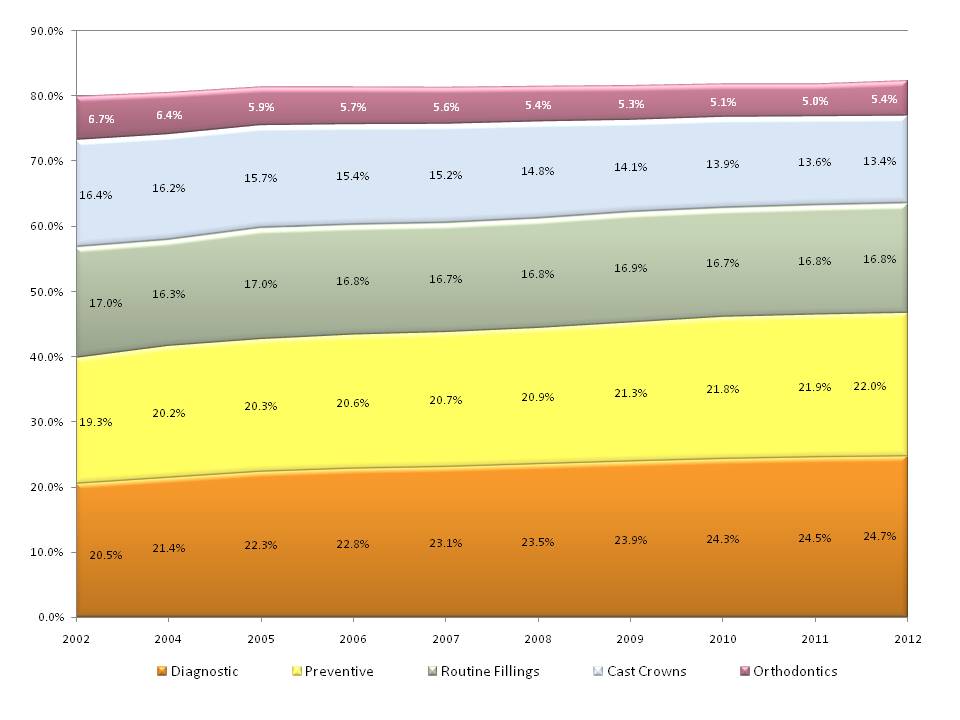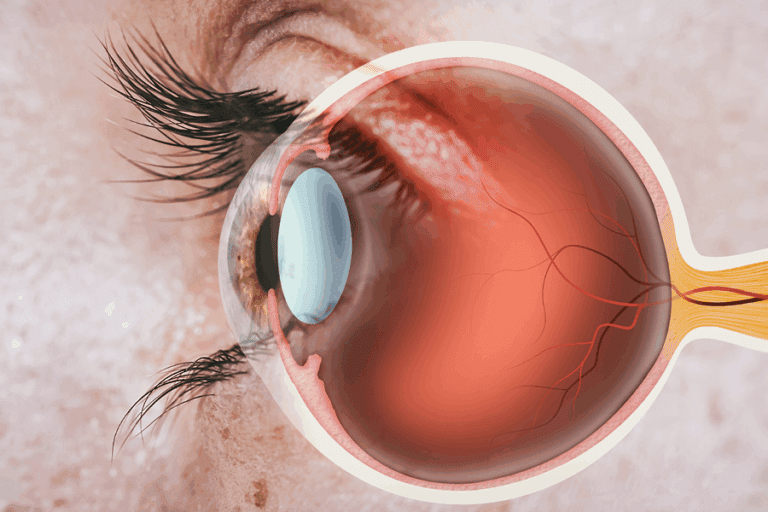One of the signs that people’s oral health is improving is a higher percentage of dental claims stemming from diagnostic and preventive (D&P) procedures – cleanings, exams, X-rays, fluoride treatments, and sealants. The greater the percentage of D&P claims, the better the general oral health of your population.
The good news is that according to Delta Dental’s annual book-of-business norms study, in 2012 the company’s claims included a greater percentage of D&P claims than ever before.
Adding together diagnostic and preventive claims, 46.7 percent of Delta Dental’s claims fell into these categories. Compare that to 2002, when the total was 39.5 percent, or even 2008, when the total was 43.5 percent.
You can really see what’s happening in the graph below. There’s been a small amount of movement — a negative two-tenths of 1 percent — in the percentage of fillings (the green bar) since 2002. The percentage of claims coming from orthodontics (the rose-colored bar) has slipped 1.3 percent. The percentage of cast crowns (the blue bar) has slipped a substantial 3 percent — and D&P (the yellow and orange bars) has picked up the slack:
 These movements may not seem huge from year to year; for instance, the 2011 D&P total was 46.4 percent, meaning the year-over-year movement was 0.3 percent. But when you consider that this is a 0.3 percent movement over millions of claims, suddenly the impact becomes clearer: More and more people are seeing their dentist for preventive care, and not the generally more expensive procedures like root canals and gum-disease treatment.
These movements may not seem huge from year to year; for instance, the 2011 D&P total was 46.4 percent, meaning the year-over-year movement was 0.3 percent. But when you consider that this is a 0.3 percent movement over millions of claims, suddenly the impact becomes clearer: More and more people are seeing their dentist for preventive care, and not the generally more expensive procedures like root canals and gum-disease treatment.
There are several reasons for this shift, according to Dr. Fred Eichmiller, vice president and science officer at Delta Dental of Wisconsin. Namely:
- Dentists are doing a better job getting their patients on a maintenance schedule. Especially during the economic downturn, when demand fell for whitening and other cosmetic procedures, many dentists adapted by getting more of their patients on regular schedules for checkups and cleanings. As the economy improved, the schedules remained.
- People are more aware of the value of oral health. Increased press coverage surrounding the passage and implementation of the Affordable Care Act has placed the spotlight on oral health and the value of dental benefits.
- Younger workers who have grown up taking advantage of their parents’ dental benefits and understanding the value of oral health are a larger part of the workforce. People are more accustomed to having and using dental benefits. More often than not, they use their benefits on D&P care.
- Dental benefits themselves have guided people toward preventive treatment. Most plan designs are weighted toward D&P coverage, meaning there’s a built-in incentive for seeing the dentist and having these procedures done. This has a spillover effect on the more costly, more involved procedures that aren’t done as a result.
All of which is very good news for health care and dental benefits.


